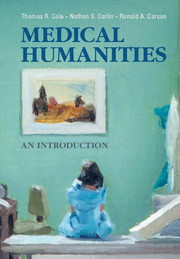Book contents
9 - Medicine and Media
from Part II - Literature, the Arts, and Medicine
Summary
Although neither the medicine nor the bioethics of these TV dramas is real, both are often so compellingly portrayed as to provide us with extraordinary opportunities to use them to encourage more in depth discussion, and to make bioethics itself more accessible and democratic.
– George AnnasAbstract
This chapter explores how doctors have been depicted on American television. Beginning with a discussion of existing scholarly literature, it examines the origins of the doctor show formula on programs such as Medic and Ben Casey; the shift toward shows, like M*A*S*H, that focused on the lives and problems of physicians rather than patients; the new emphasis on the doctor’s family life on programs like The Cosby Show; the growing sense of disillusionment presented on shows such as ER; and the representation of the doctor as antihero on shows like House, M.D. Then, with a focus on The Mindy Project, it considers some recent developments in the doctor show formula.
INTRODUCTION
Police shows and doctor shows have been a staple of American television for well over fifty years. It is striking that while police shows tend to focus on the taking of life (i.e., murder) doctor shows tend to focus on procedures for saving life (e.g., surgery). The ongoing popularity of both genres seems to indicate that the American public never seems to grow weary of watching the extremities of life.
- Type
- Chapter
- Information
- Medical Humanities , pp. 153 - 167Publisher: Cambridge University PressPrint publication year: 2014

